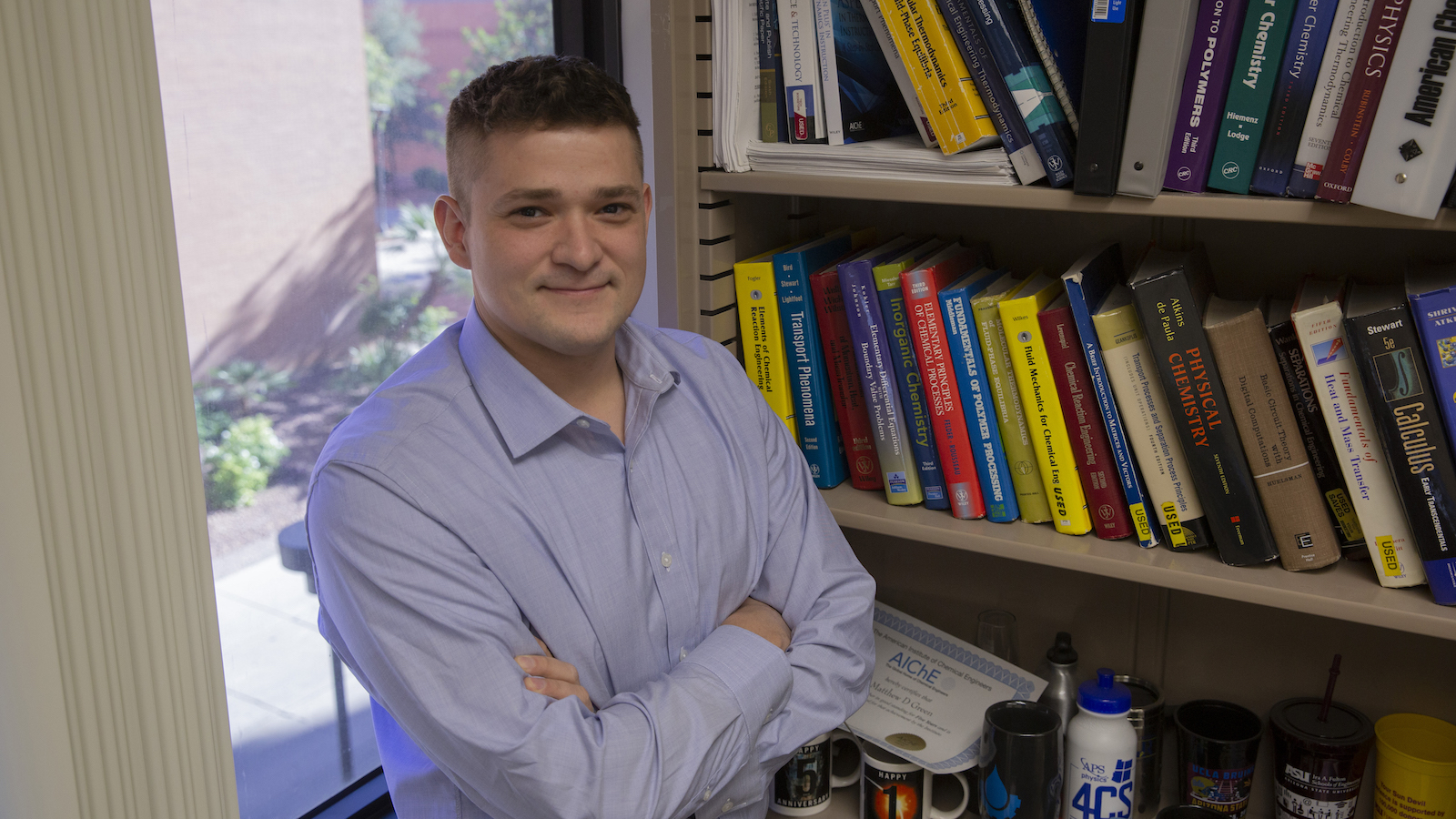
Clearing the air for deep space travel

Matthew D. Green, an assistant professor of chemical engineering in the Ira A. Fulton Schools of Engineering at Arizona State University, wants to help space travelers breathe easier.
Astronauts inhale oxygen and exhale carbon dioxide when traveling in space just like they do on Earth. But on the Earth’s surface, exhaled carbon dioxide is absorbed by plant life. Space is decidedly less green, creating the need to prevent the toxic gas from building up.
When humans exhale carbon dioxide in a sealed environment such as a space capsule, the oxygen level falls while the carbon dioxide level rises.
The Occupational Safety and Health Administration considers any atmosphere with an oxygen level below 19.5 percent to be oxygen-deficient and immediately dangerous to human life and health. In enclosed environments, oxygen levels can get dangerously low if rising levels of carbon dioxide are not absorbed. Such low oxygen levels can result in symptoms like dizziness, confusion and headaches. High levels of carbon dioxide in these environments can be life-threatening.
Green is working to develop high-efficiency, low-maintenance carbon dioxide removal systems, which are critical for human space missions beyond low Earth orbit. He recently received an Early Career Faculty Award from NASA as part of the agency’s Space Technology Research Grants Program for this work.
Currently, carbon dioxide is removed with solid sorbents made from silica and/or zeolites. These materials are unreliable and require frequent maintenance. Additionally, they can form dust, which is a health hazard for the crew. Ionic liquids have recently received interest for their inclusion in carbon dioxide removal assemblies. These molten salts have unique characteristics, including very low volatility or high stability. However, liquids in space tend to float away, making the use of ionic liquids problematic.
“The liquids must be stably supported within a polymer matrix to be implemented in microgravity environments,” Green says. “Therefore, this project will focus on designing new support polymers, processing the polymers into large surface area membranes, loading them with carbon dioxide-selective ionic liquids, and engineering their performance to improve carbon dioxide removal in microgravity environments.”
Green anticipates two phases of this project: the passive capture of carbon dioxide from the air and a continuous removal of carbon dioxide.
In the first phase, polymers will be integrated into life support systems, like a filter you would find in your house or in your car. On the surface the polymer would look like an air filter or a piece of cotton; however, if you take a closer look you’d see the ionic liquid soaked into the polymer like a wet cloth that will never dry out due to low volatility.
“The fibers of our filters will contain an ionic liquid (molten salt) that can selectively absorb carbon dioxide,” says Green. “Therefore, as air passes over the filter, it will remove carbon dioxide. After some period of time, the carbon dioxide in the filter will have to be discharged to regenerate the full capacity filter.”
Green’s work with polymers impacts several areas, including consumer products, packaging, textiles, food additives, performance materials and membranes.
Within his subdiscipline of chemical engineering, Green is creating a multidisciplinary research experience. Green’s work with polymers often goes from synthesis to device building and testing. He begins with small molecule building blocks, making a polymer and turning that polymer into something tangible.
This work satisfies Green’s desire to pursue meaningful answers to interesting questions through his research.
“I’m naturally curious and also try to improve the efficiency or performance of materials or processes that I encounter,” Green says. “I really believe that polymer technologies can provide solutions to some of today’s biggest engineering challenges such as sustainable access to clean water and rising carbon dioxide concentrations. So, these are some of the questions I ask and for which I seek out answers.”
Green is now the third Fulton Schools faculty member to win this honor, following Mary Laura Lind in 2012 and Yuji Zhao in 2015.



































